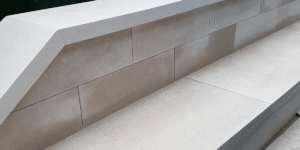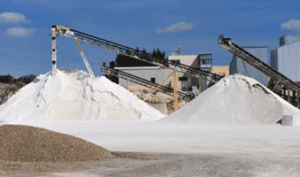An introduction to Portland Stone
Portland stone is one of the most iconic building materials used in London, and indeed is popular across all of Britain and the rest of the world. It has been central to buildings in England’s capital since the 1600s, after the fire of London, and has remained the stone of choice for many different applications, partly because of its beautiful colour and its durability. Its uses have been extremely varied and it is suitable for many types of buildings, giving them a natural, light aesthetic which has appealed to many famous architects and designers.
A Little bit of Portland Stone History
As an example of how the stone has been key in the history of Britain, Joanna Davis uses her article, Portland Stone That Shaped Our Wartime History, to look at its use in wartime memorials as well as for industrial buildings and offices during and after the first world war. She talks about the many different buildings which incorporate Portland stone, such as The Bank Of England, the National Audit Office, the BBC’s Broadcasting House, and even the redevelopment of Regent Street. Clearly, Portland stone is absolutely central to construction in the UK’s capital as well as across the country, and it is used in many different industries, for many different purposes.
Historically, Portland stone has also been extremely important. Many of the UK’s ancient buildings and monuments were built of Portland stone, and continue to be repaired with it when necessary, such as St Paul’s Cathedral and Westminster Abbey. As explained in Contemporary Jurassic, Portland stone is very weather resistant, so it is particularly useful for outdoor building work and for monuments which are intended to be long-lasting but are exposed to the elements. Its durability makes it an obvious choice for any architect or sculptor looking to ensure their work lasts. This explains why it’s a popular choice for headstones and why it was used to build the Cenotaph, so that the memories inscribed on the stone can endure for as long as possible.
Where does Portland Stone come from?
Portland stone comes, unsurprisingly, from the Island of Portland, and has been quarried there for approximately 1000 years. Although there is high demand for it (both in the UK and across the world), which has increased dramatically over years, there is still plenty of stone on the island to be quarried. Originally, quarrying was done on the east side of the island, but as more stone was needed to supply demand, quarries opened up on the north coast, and finally in the centre of the island. It’s estimated that the stone resources will last for hundreds of years to come, even taking into account the expanding demand.
Why does everyone love Portland Stone in London?
Portland stone is amongst the most popular stones for architecture, and is used to make beautiful, strong, long-lasting buildings which will stand up to the test of time. Steps crafted from this stone will prove durable and weather-resistant, while monuments and sculptures will retain their shape and colour for as long as possible. Whatever your building requirements, Portland stone is likely to be a good choice for fulfilling them and giving you a beautiful, pearly, uniform aesthetic to fit with any construction.
Get in touch today to find out the lead times on Portland Stone for your project!
References:
Davis, J., Portland Stone That Shaped Our Wartime History,Dorset Echo, (2015), <http://www.dorsetecho.co.uk/news/features/lookingback/ 12930745.Portland_stone_that_shaped_our_wartime_history/>
‘Bremnerl54,’ Contemporary Jurassic, Geoarchitecture, (2012), https://geoarchitecture.wordpress.com/2012/10/01/contemporary-jurassic


